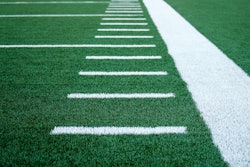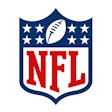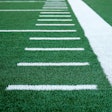Copyright 2017 Collier County Publishing Company
All Rights Reserved
Naples Daily News (Florida)
Along with the recent opening of training camp by many NFL teams came an updated study reported in the Journal of the American Medical Association that found the degenerative brain disease CTE (chronic traumatic encephalopathy) in the brains of 110 of 111 deceased former National Football League players who donated their brains to research.
As the researchers acknowledge, this was a skewed sample; one presumes former players without symptoms were less likely to have participated. But even skeptics of the link between CTE and football must be alarmed at the sheer number of cases among former pro football players who have died in just the last three years.
That outcome should concern not just professional football players or parents contemplating whether their children should play the sport but run-of-the-mill fans of the game as well.
Just how dangerous is football, and are we dooming generations of men to debilitating brain injury simply for our own amusement? As much fun as it may be to root for the pros or for local high school and college teams, the risk of CTE is more than worrisome.
Most, if not all, sports carry risk of injury, but there are broken bones and torn cartilage, and then there's a disease that causes memory loss, confusion, loss of impulse control, aggressive behavior and ultimately progressive dementia.
Concern not new
Medical experts like Dr. Bennet Omalu, the Nigerian-born neuropathologist who discovered CTE in the brain of Hall of Fame center Mike Webster and whose experience was detailed in the movie "Concussion," has been warning for years that most NFL players have brain disease. And the NFL, while slow to recognize the ramifications of this research, has made efforts in recent years to address the issue, with some modest rule changes, more elaborate concussion screenings and equipment upgrades, donations for research - and a promised $1 billion settlement to former players with brain injury.
But given the mounting evidence about the severity and extent of the problem, it's fair to question whether enough has been done. It's still not uncommon for those involved in the NFL to dismiss heightened concerns about concussions.
It isn't just professional players who face danger. Helmet-to-helmet collisions and the concussions that result from such violent contact are also a problem in the lower ranks. The same CTE study published this week also found evidence of the disease in former college players (48 out of 53 tested) and in former high school players (3 of 14 involved in the study), although the disease was most severe in pro players and particularly those who played on the line, as running backs or in the defensive backfield.
Nor have mounting concerns over football-related head injuries escaped the attention of families nationwide who are becoming increasingly reluctant to enroll their children in youth football leagues.
Organizations like USA Football are changing rules for the sport so that school-age children are playing a less violent game. Eliminating kickoffs and punts, reducing the number of players and banning the three-point stance (which tends to promote helmet-to-helmet contact between linemen) are among the major changes.
Some schools are eliminating varsity football altogether. Other youth sports organizations are encouraging "flag" football in which getting "tackled" means simply that a velcro-attached flag has been removed from a player's belt.
The future?
This isn't to suggest it's time to turn in season tickets or even to eliminate football from high schools.
But the link between the repeated blows to the head suffered by football players and CTE is too well documented to accept business as usual.
The NFL's actions to date seem underwhelming compared to the threat, and it will take more than a few preseason no-shows to convince owners in this highly profitable form of entertainment that fans demand something more than what's been offered to date.
If fans truly care about their favorite players, they'll not only want them to succeed on the playing field but live long, healthy lives as well.
Read More of Today's AB Headlines
Subscribe to Our Daily E-Newsletter
Terms and Conditions Privacy Policy



































